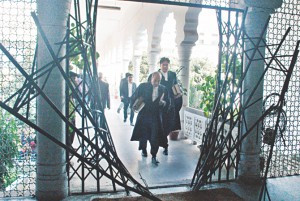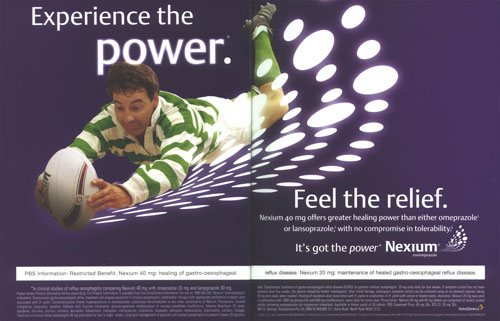California Court of Appeal Embraces Presence – Not Evidence – As Causation
By Anna Mourlam on January 10, 2018
Last month, a California court of appeal ruled that “a plaintiff has no obligation to prove asbestos exposure from a specific product on a specific date or time.” Rather, in Turley v. Familian Corp., the court found that exposure can be inferred if a defendant’s product was at a work site and “sufficiently prevalent to warrant an inference that plaintiff was exposed to it.” In other words, the court ruled that circumstantial evidence of a product’s mere presence is sufficient to defeat a motion for summary judgment.
 In Turley, defendant Familian moved for summary judgment on the basis that the plaintiffs could not show exposure to asbestos in a Familian-brand product. The plaintiffs’ opposition to the motion included a declaration from a third-party witness who had not been deposed, but who testified that defendant-supplied asbestos-containing gaskets were frequently used on the many high-pressure and/or high-temperature valves at the two compressor stations supervised by the plaintiff, and that the plaintiff was commonly present when the work of replacing the asbestos-containing valves was being done. The trial court ruled that this was speculative and granted summary judgment.
In Turley, defendant Familian moved for summary judgment on the basis that the plaintiffs could not show exposure to asbestos in a Familian-brand product. The plaintiffs’ opposition to the motion included a declaration from a third-party witness who had not been deposed, but who testified that defendant-supplied asbestos-containing gaskets were frequently used on the many high-pressure and/or high-temperature valves at the two compressor stations supervised by the plaintiff, and that the plaintiff was commonly present when the work of replacing the asbestos-containing valves was being done. The trial court ruled that this was speculative and granted summary judgment.
The court of appeal reversed. The court found that the co-worker’s testimony had adequate foundation and was not speculative. “For example, [the co-worker] testified that when he was ordering gaskets, he knew they were asbestos-containing based on PG&E’s codes and other vendor numbers … [and] that the PG&E codes were necessarily based on content, because certain applications required asbestos-containing gaskets.”
This evidence was held sufficient to defeat summary judgment, even without evidence of “exposure from a specific product on a specific date or time.” Turley relied heavily upon the 1995 decision Lineaweaver v. Plant Insulation Co., which reversed a nonsuit where “[w]hile there was no direct evidence that [plaintiff] was exposed to [defendant’s product], the circumstantial evidence was sufficient to support a reasonable inference of exposure.” The Turley court also discussed the more recent decision, Webb v. Special Electric Co., Inc. (2016) 63 Cal.4th 167, for the proposition that this kind of circumstantial evidence was sufficient in establishing causation. In Webb, the California Supreme Court rejected summary judgment where the plaintiff “was exposed to dust from Johns-Manville products containing trace amounts of crocidolite at roughly the same time Special Electric was supplying crocidolite asbestos to Johns-Manville. While evidence of the link could be stronger, it is nonetheless sufficient for the jury to have found that Special Electric’s asbestos was a substantial factor in causing [the plaintiff’s] mesothelioma.”
Turley v. Familian Corp. is yet another in a long line of California decisions that appear to expand liability by tempering the summary judgment standard. Unfortunately, the result may be opening the door for a rush of rather dubious asbestos cases.

 wrongful death case. Sam Davis worked as an auto mechanic and home remodeler from approximately 1963 to 1979. He performed “one or two” brake jobs per day, and always used Bendix brake linings (for which defendant Honeywell was responsible). These linings contained 50 percent chrysotile asbestos by weight. He was also allegedly exposed to asbestos as a result of his home remodel work.
wrongful death case. Sam Davis worked as an auto mechanic and home remodeler from approximately 1963 to 1979. He performed “one or two” brake jobs per day, and always used Bendix brake linings (for which defendant Honeywell was responsible). These linings contained 50 percent chrysotile asbestos by weight. He was also allegedly exposed to asbestos as a result of his home remodel work. lower court erred in failing to consider flaws in plaintiffs’ damages model merely because the damages model would be pertinent on merits issues…..thus, "running afoul of our precedents requiring precisely that inquiry". It was up to the district court to determine whether the expert’s methodology was "just and reasonable inference or speculative."
lower court erred in failing to consider flaws in plaintiffs’ damages model merely because the damages model would be pertinent on merits issues…..thus, "running afoul of our precedents requiring precisely that inquiry". It was up to the district court to determine whether the expert’s methodology was "just and reasonable inference or speculative."  Plaintiffs alleged that they paid higher prices for Nexium because less expensive generic versions of Nexium were prevented from coming onto the market due to AstraZeneca’s settlement with three generic manufacturers. The end-payors (as the plaintiffs called themselves) sought to certify a sprawling Rule 26(b)(3) class consisting of virtually every consumer (insured and uninsured), commercial insurer, health plan and pharmacy benefit manager who had paid any portion of the purchase price for Nexium for a six year period in twenty-six states.
Plaintiffs alleged that they paid higher prices for Nexium because less expensive generic versions of Nexium were prevented from coming onto the market due to AstraZeneca’s settlement with three generic manufacturers. The end-payors (as the plaintiffs called themselves) sought to certify a sprawling Rule 26(b)(3) class consisting of virtually every consumer (insured and uninsured), commercial insurer, health plan and pharmacy benefit manager who had paid any portion of the purchase price for Nexium for a six year period in twenty-six states. would continue to purchase branded Nexium after generic entry due to preference or their physician’s recommendation. Such brand loyalists would potentially have faced higher Nexium prices had generic Nexium been available.
would continue to purchase branded Nexium after generic entry due to preference or their physician’s recommendation. Such brand loyalists would potentially have faced higher Nexium prices had generic Nexium been available. meet their burden of Rule 26(b)(3) that questions of law or fact common to class members predominated over any questions affecting only individual members, the district court denied class certification.
meet their burden of Rule 26(b)(3) that questions of law or fact common to class members predominated over any questions affecting only individual members, the district court denied class certification.